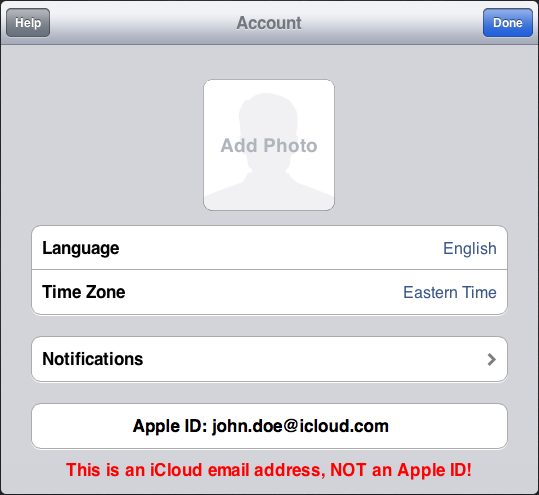If you want the short version of this post, here it is: Any time Apple asks you to log in, just enter your Apple ID and password. Buying a song from iTunes? Enter your Apple ID and password. Visiting the Apple Online Store to buy a new Mac? Enter your Apple ID and password. Making a Genius Bar reservation? Enter your Apple ID and password.
There are not separate accounts for iTunes, iCloud, etc. They all share a single account, and that account is known as your Apple ID.
If it’s so easy, then why do some folks find it so confusing? Mostly because Apple hasn’t done a good job of explaining it. Many users don’t realize that every Apple service and online store share a single sign-on.
Any newly created Apple ID must be an email address that does not use an Apple-owned domain. So john.doe@example.com is a valid Apple ID, but john.doe@icloud.com is not. ((Under the old rules, Apple IDs could end in mac.com or me.com, and those users have been grandfathered-in. For technical reasons unknown to me, those are also the only users who may not change their Apple ID.))
When you sign up for an Apple ID, your email address becomes your Apple ID. If you ever change your email address, you will need to change your Apple ID to match the new address.
You can sign up for an Apple ID using any web browser, even on Windows and Linux. But the Mail feature of iCloud can only be set up on a Mac or iOS device. To create an iCloud email address, go to System Preferences and clicks on iCloud:
If you set up an iCloud email account (i.e. john.doe@icloud.com), you will now have two email addresses associated with your Apple ID. Apple conveniently accepts either address at any login prompt, but don’t let that confuse you. Even though your Apple ID is now linked to an iCloud address, your Apple ID is still your primary email address.
Making things even more confusing, the iCloud account panel incorrectly labels the email address as an Apple ID. This is just plain wrong.
Just remember this: your Apple ID is your primary email address. If you enter a new primary email address, you will change your Apple ID, but not your iCloud email address (which cannot be changed).
If you visit the My Apple ID page and click “Manage your Apple ID,” you’ll see something that looks this:
As a practical matter, any time you’re prompted for your Apple ID, you can enter either your primary email address or your iCloud.com address. ((If you’ve been around long enough to also have a mac.com or me.com address, those may work too; see this article for details.))
Any questions?


